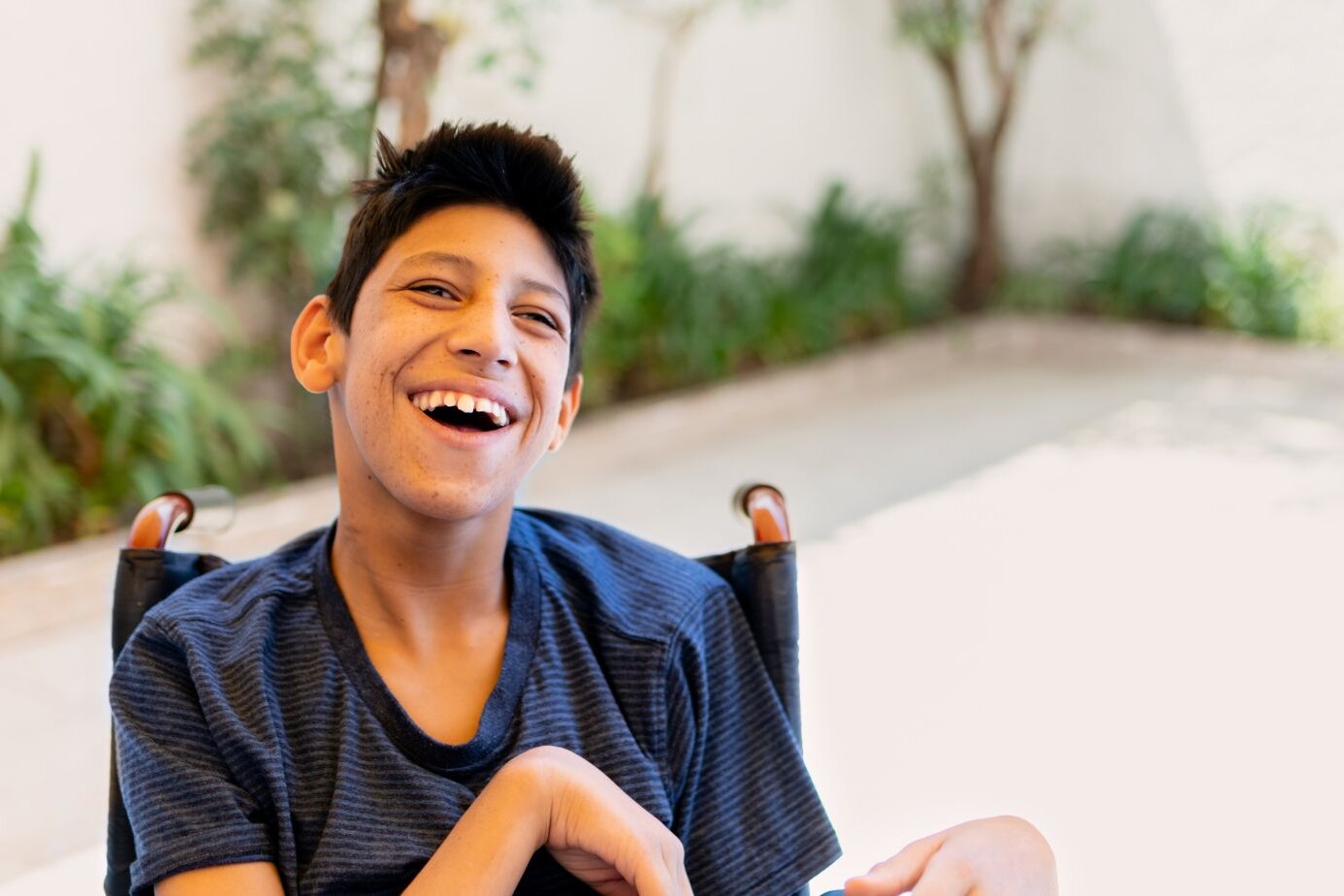Are you familiar with cerebral palsy? Do you know the key facts about its diagnosis? If not, don’t worry. In this article, we will provide you with a comprehensive understanding of cerebral palsy diagnosis, ensuring you have the knowledge you need to navigate this condition.
Cerebral palsy is a group of disorders that primarily affects a person’s ability to move and maintain balance and posture. It is caused by abnormal brain development or damage to the developing brain. This condition is the most common motor disability in childhood, and contrary to common misconceptions, it does not get worse over time.
Symptoms of cerebral palsy vary from person to person but can include problems with movement, posture, and related conditions such as intellectual disability and seizures. As there are different types of cerebral palsy, it’s important to understand the specific characteristics and areas of the body they affect.
Early identification is crucial when it comes to cerebral palsy. By recognizing the early signs and seeking professional help, you can ensure that appropriate screening and diagnostic tests are conducted. The earlier the diagnosis, the sooner interventions and treatments can be implemented to improve motor skills, communication abilities, and overall quality of life.
Stay tuned for the upcoming sections of this article, where we will delve deeper into the types of cerebral palsy, the early signs to look out for, the screening and diagnostic processes, available treatments and intervention services, as well as the causes and risk factors associated with this condition.
If you are ready to enhance your understanding of cerebral palsy and how it is diagnosed, continue reading and empower yourself with the necessary knowledge to support individuals with this condition.
Table of Contents
ToggleTypes of Cerebral Palsy
When it comes to cerebral palsy (CP), doctors classify the condition based on the primary type of movement disorder involved. There are four main types of cerebral palsy: spastic cerebral palsy, dyskinetic cerebral palsy (including athetoid, choreoathetoid, and dystonic cerebral palsies), ataxic cerebral palsy, and mixed cerebral palsy. Let’s take a closer look at each type:
- Spastic Cerebral Palsy: This is the most common type of cerebral palsy, affecting about 80% of individuals with CP. It is characterized by stiff muscles and exaggerated reflexes, making movements rigid and sometimes jerky.
- Dyskinetic Cerebral Palsy: Dyskinetic CP encompasses various subtypes, including athetoid, choreoathetoid, and dystonic cerebral palsies. These types involve involuntary and uncontrolled movements, often accompanied by changes in muscle tone. People with dyskinetic CP may experience writhing motions, slow or rapid movements, and difficulty in maintaining control over their posture.
- Ataxic Cerebral Palsy: Ataxic CP is characterized by problems with coordination and balance. People with ataxic CP may have tremors, difficulties in precise movements, and an unsteady gait. Their muscles may appear shaky or loose.
- Mixed Cerebral Palsy: As the name suggests, mixed cerebral palsy involves a combination of the other types of CP. Individuals with mixed CP exhibit symptoms associated with more than one type, resulting in a unique set of challenges that may vary from person to person.
Each type of cerebral palsy has distinct characteristics and affects different areas of the body. Understanding the specific type of CP is crucial for developing personalized treatment plans and providing appropriate support for individuals with the condition.

Early Signs of Cerebral Palsy
Recognizing the early signs of cerebral palsy is crucial for early intervention and support. By monitoring your child’s developmental milestones, you can identify motor delays and seek appropriate medical guidance. Some of the early signs to look out for include:
- A delay in reaching motor milestones such as rolling over, sitting, standing, or walking.
- Head lag when picked up, where the baby’s head falls back instead of staying upright.
- Stiffness or floppiness in the limbs, making it difficult for the child to move smoothly.
- Difficulty bringing hands together or controlling fine motor skills.
- Abnormal crawling or movement patterns, such as asymmetrical movements or favoring one side of the body.
If you notice any of these signs or have concerns about your child’s development, it is important to consult a healthcare professional. Early intervention and therapy can make a significant difference in managing cerebral palsy and promoting your child’s overall well-being.
Monitoring Developmental Milestones
Developmental milestones are essential indicators of a child’s growth and motor abilities. Tracking these milestones can help identify potential delays or abnormalities. Here is a table outlining typical developmental milestones for children:
| Developmental Milestones | Typical Age |
|---|---|
| Rolling Over | 4-6 months |
| Sitting Independently | 6-9 months |
| Crawling | 6-10 months |
| Standing with Support | 9-12 months |
| Walking Independently | 12-15 months |
Note that these are general age ranges, and every child develops at their own pace. However, if your child consistently lags behind these milestones or displays any early signs of cerebral palsy, it is advisable to consult a healthcare professional for further evaluation.
Remember, early detection and intervention can greatly improve the long-term outcomes for children with cerebral palsy. Regular check-ups, close monitoring of developmental milestones, and seeking professional guidance are essential for providing the best care and support for your child.
Screening and Diagnosis of Cerebral Palsy
Diagnosing cerebral palsy involves a comprehensive approach that includes developmental monitoring, developmental screening, and developmental and medical evaluations. These steps are essential to accurately identify the presence and type of cerebral palsy, as well as rule out other potential disorders.
Developmental Monitoring
Developmental monitoring is an ongoing process that tracks a child’s growth and development over time. It involves observing and documenting their achievement of developmental milestones, such as rolling over, sitting, standing, and walking. Parents, caregivers, and healthcare providers play a crucial role in monitoring a child’s development and identifying any concerns that may indicate the presence of cerebral palsy.
Developmental Screening
If any concerns arise during developmental monitoring, a developmental screening test is conducted. This test helps assess a child’s performance in various domains of development, such as motor skills, language abilities, and social-emotional development. It is designed to identify specific developmental delays and determine if further evaluation and intervention are necessary.
Developmental and Medical Evaluations
If the results of the developmental screening raise concerns about cerebral palsy, further developmental and medical evaluations are conducted. These evaluations involve a multidisciplinary team of healthcare professionals, including pediatricians, neurologists, physical therapists, and occupational therapists. They aim to gather comprehensive information about the child’s development, medical history, and potential underlying causes of cerebral palsy.
During the evaluations, various assessments and tests may be performed, such as neurological exams, brain imaging studies (such as MRI or CT scans), genetic testing, and blood tests. These tests help diagnose the specific type of cerebral palsy, determine the severity, and rule out other conditions that may mimic its symptoms.
By following a thorough screening and diagnostic process, healthcare professionals can provide accurate and tailored interventions for children with cerebral palsy, enhancing their overall development and quality of life.

| Advantages of Screening and Diagnosis | Challenges in Screening and Diagnosis |
|---|---|
|
|
Treatments and Intervention Services for Cerebral Palsy
While there is no cure for cerebral palsy (CP), there are various treatments and intervention services available to improve the lives of individuals with the condition. These treatments can help manage symptoms, enhance mobility, and promote overall well-being.
Common Treatments for Cerebral Palsy
CP treatments may include:
- Medications: Certain medications can help control muscle spasms, reduce pain, and manage associated conditions such as seizures.
- Surgery: In some cases, surgical interventions can correct musculoskeletal issues, improve mobility, and alleviate spasticity.
- Braces and Assistive Devices: Orthotic braces and specialized equipment, such as canes or walkers, assist individuals with CP in maintaining stability and mobility.

Therapies for Cerebral Palsy
Various therapies play a crucial role in managing cerebral palsy:
- Physical Therapy: Physical therapy focuses on improving muscle strength, flexibility, and coordination. It helps individuals with CP gain control over their movements, enhance balance, and increase independence.
- Occupational Therapy: Occupational therapy aims to improve fine motor skills, enhance self-care abilities, and promote independence in daily activities. It focuses on tasks such as dressing, eating, and writing.
- Speech Therapy: Speech therapy assists individuals with CP in improving their speech and communication skills. It addresses difficulties with pronunciation, swallowing, and overall verbal expression.
Early Intervention Services
Early intervention services are vital for children with cerebral palsy. These services, provided through special education laws, offer targeted support to promote optimal development and growth. Early intervention programs may include:
- Evaluations to identify individual needs
- Early treatment and therapy services
- Assistive technology evaluations and support
- Parent education and training
By accessing early intervention services, children with CP can receive tailored support to address their specific needs and maximize their potential.
Remember, the sooner treatments and interventions are initiated, the better the outcomes. It is important to consult with healthcare professionals to develop a comprehensive treatment plan suited to the individual with cerebral palsy.
Causes and Risk Factors of Cerebral Palsy
Cerebral palsy (CP) occurs due to abnormal brain development or damage that impacts a child’s muscle control. Several causes and risk factors contribute to the development of CP, including:
- Genetic abnormalities: Certain genetic factors can increase the likelihood of cerebral palsy in some individuals.
- Congenital brain malformations: Structural abnormalities in the brain that occur during fetal development can lead to CP.
- Maternal infections or fevers: Infections or high fevers during pregnancy can damage the developing brain of the fetus.
- Fetal injury: Trauma or injury to the developing brain before, during, or shortly after birth can cause CP.
- Brain bleeding: Some cases of cerebral palsy result from bleeding in the baby’s brain.
- Severe lack of oxygen in the brain: Prolonged oxygen deprivation during labor and delivery can lead to brain damage and CP.
While these causes are known to contribute to CP, many cases have unknown causes. Additionally, certain risk factors increase the likelihood of a child developing cerebral palsy. These include:
- Low birth weight: Babies born with a low birth weight have a higher risk of CP.
- Premature birth: Preterm babies, born before 37 weeks of gestation, are more susceptible to cerebral palsy.
- Infections during pregnancy: Maternal infections, such as rubella or cytomegalovirus, increase the risk of CP in the baby.
Understanding the causes and risk factors associated with cerebral palsy is crucial for identifying potential preventive measures and providing appropriate care.

Conclusion
Understanding the diagnosis of cerebral palsy is paramount for the well-being of children and their families. By recognizing the early signs and seeking proper screening and diagnosis, individuals with CP can access the necessary treatments and intervention services to improve their motor skills, communication abilities, and overall quality of life.
Diagnosing cerebral palsy involves developmental monitoring and screening tests followed by further evaluations to determine the specific type and rule out other disorders. Once diagnosed, a tailored treatment plan can be implemented, which may include medications, surgery, and various therapies such as physical, occupational, and speech therapy.
By staying informed and consulting healthcare professionals, you can ensure that your child receives the appropriate care and support for their specific needs. Early intervention is crucial, so if you have any concerns about your child’s development, don’t hesitate to reach out for guidance. Together, we can make a positive impact on the lives of individuals with cerebral palsy.
FAQ
What is cerebral palsy?
Cerebral palsy (CP) is a group of disorders that affect a person’s ability to move and maintain balance and posture. It is caused by abnormal brain development or damage to the developing brain.
What are the types of cerebral palsy?
The four main types of cerebral palsy are spastic cerebral palsy, dyskinetic cerebral palsy (including athetoid, choreoathetoid, and dystonic cerebral palsies), ataxic cerebral palsy, and mixed cerebral palsy.
What are the early signs of cerebral palsy?
Early signs of cerebral palsy can include a delay in reaching motor milestones, head lag when picked up, stiffness or floppiness, difficulty bringing hands together, and abnormal crawling or movement patterns.
How is cerebral palsy diagnosed?
Cerebral palsy is diagnosed through developmental monitoring, developmental screening tests, and further evaluations to determine the specific type of CP and rule out other disorders.
What are the treatments and intervention services for cerebral palsy?
Treatments for cerebral palsy may include medications, surgery, braces, physical therapy, occupational therapy, and speech therapy. Intervention services provided through special education laws are also available.
What are the causes and risk factors of cerebral palsy?
Causes of cerebral palsy can include genetic abnormalities, brain malformations, maternal infections or fevers, fetal injury, brain bleeding, and severe lack of oxygen in the brain. Certain risk factors such as low birth weight, premature birth, and infections during pregnancy can increase the likelihood of developing CP.
How important is it to seek early diagnosis for cerebral palsy?
Diagnosing cerebral palsy is crucial for the well-being of children and their families. By recognizing the early signs, seeking proper screening and diagnosis, and accessing appropriate treatments and intervention services, individuals with CP can improve their motor skills, communication abilities, and overall quality of life.
About The Author

This article is medically reviewed by Dr. Chandril Chugh, Board-Certified Neurologist, providing expert insights and reliable health information.
Dr. Chandril Chugh is a U.S.-trained neurologist with over a decade of experience. Known for his compassionate care, he specializes in treating neurological conditions such as migraines, epilepsy, and Parkinson’s disease. Dr. Chugh is highly regarded for his patient-centered approach and dedication to providing personalized care.
→ Book a consultation to discover which remedies suit your needs best.




